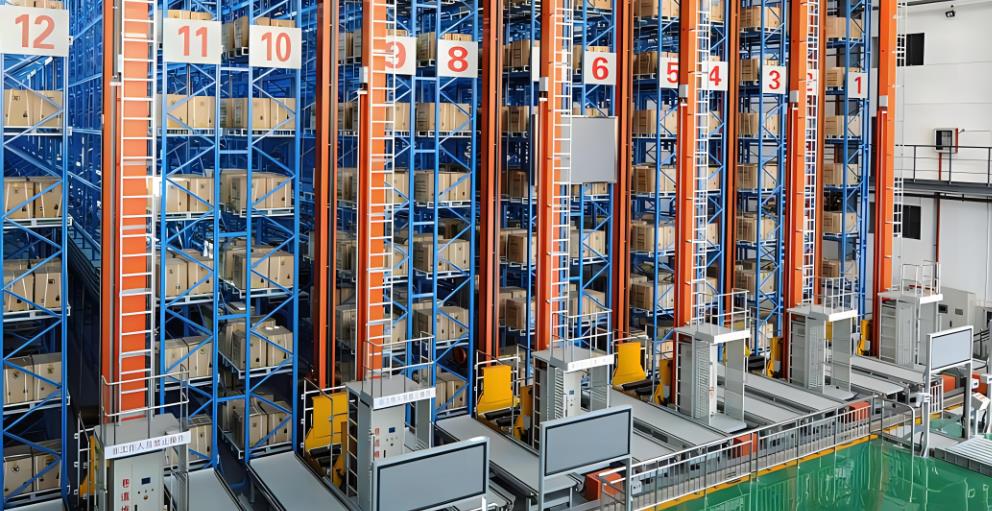The advantages and disadvantages of automated warehouses
Automated Warehouses, also known as robotic or smart warehouses, utilize advanced technologies and automation systems to perform various tasks traditionally carried out by human operators. While automated warehouses offer several advantages, they also come with certain disadvantages. Here are some of the advantages and disadvantages of automated warehouses:
Advantages of Automated Warehouses:
1. Increased Efficiency: Automated systems can operate continuously without fatigue, resulting in improved efficiency and productivity. They can perform tasks at a faster pace compared to manual operations, reducing processing times and increasing throughput.
2. Reduced Labor Costs: Automation eliminates the need for a significant manual workforce, leading to potential savings in labor costs. With fewer human operators required, companies can allocate resources to other areas of the business.
3. Enhanced Accuracy and Precision: Automated systems are designed to perform tasks with high accuracy and precision, minimizing errors and reducing the risk of product damage or loss. This can result in improved order accuracy and customer satisfaction.
4. Optimal Space Utilization: Automated warehouses can optimize storage space by utilizing vertical space more efficiently. Automated storage and retrieval systems (AS/RS) can stack items higher and closer together than manual methods, maximizing storage capacity.

5. Improved Inventory Management: Automation systems can track and manage inventory in real-time, providing accurate and up-to-date information on stock levels, locations, and expiration dates. This enables better inventory control, reducing stockouts and overstock situations.
6. Enhanced Safety: Automated warehouses can help improve safety by reducing the need for manual material handling and repetitive tasks. This reduces the risk of workplace accidents and injuries, creating a safer working environment.
7. Improved Order Fulfillment: Automated systems can enable faster and more accurate order fulfillment processes, reducing lead times and improving customer satisfaction. They can quickly locate, retrieve, and assemble items for shipping, minimizing order processing errors.
8. Real-Time Data and Analytics: Automated warehouses generate a wealth of data that can be collected and analyzed in real-time. This data provides valuable insights into operational performance, inventory levels, demand patterns, and other key metrics, allowing for data-driven decision-making and process optimization.
9. Scalability: Automated warehouses can be designed with scalability in mind, allowing for easier expansion and adaptation to changing business needs. Additional automation modules or equipment can be added as the business grows, enhancing operational capacity without significant disruptions.
10. Energy Efficiency: Some automated systems incorporate energy-saving features, such as energy-efficient lighting, motion sensors, and optimized equipment usage. This can lead to reduced energy consumption and lower operational costs over time.
Disadvantages of Automated Warehouses:
1. High Initial Investment: Implementing an automated warehouse requires a significant upfront investment in equipment, software, and infrastructure. The costs associated with designing, purchasing, and installing automation systems can be substantial, making it a barrier for some companies.
2. Technical Complexity: Automated systems involve complex technologies, including robotics, sensors, and software integration. Maintaining and troubleshooting these systems requires specialized knowledge and technical expertise, which may pose challenges for some organizations.
3. Limited Flexibility: Automated systems are designed for specific tasks and processes, making them less adaptable to sudden changes in demand or product variations. Modifications or reconfigurations to accommodate new products or processes can be time-consuming and costly.
4. Dependence on Technology: Automated warehouses heavily rely on technology and software systems. Any technical glitches or failures can disrupt operations and result in downtime until the issues are resolved.
5. Reduced Human Interaction: Automation reduces the need for human involvement in certain tasks, resulting in less direct interaction between employees and the warehouse environment. This can lead to a sense of disconnection and reduced opportunities for skill development and collaboration.
6. Potential Job Displacement: The automation of certain tasks in warehouses can lead to job displacement and workforce restructuring. While automation may create new job roles requiring different skills, it can also result in job losses for workers involved in manual operations.
7. Complexity of Integration: Integrating different automation technologies and software systems can be complex, especially when integrating with existing warehouse management systems (WMS) or enterprise resource planning (ERP) systems. Compatibility issues, data synchronization challenges, and software integration complexities may arise during the implementation process.
8. Maintenance and Downtime: Automated systems require regular maintenance and periodic downtime for maintenance activities, such as software updates, equipment servicing, and repairs. The downtime can disrupt operations and impact productivity, especially if contingency plans are not in place.
9. Skill Requirements and Training: Operating and maintaining automated systems often require specialized skills and training. Organizations need to invest in training programs to ensure that employees have the necessary competencies to operate and troubleshoot the automation equipment effectively.
10. Initial Learning Curve: Transitioning from manual operations to an automated warehouse can involve a learning curve for employees. Adjusting to new processes, software interfaces, and equipment may take time, and there can be a temporary decrease in productivity during the initial implementation phase.
11. Vulnerability to Cybersecurity Risks: Automation systems are connected to networks and software platforms, which can make them susceptible to cybersecurity threats. Protecting against data breaches, unauthorized access, and system vulnerabilities becomes crucial to maintain the integrity and security of warehouse operations.
It's important to note that the advantages and disadvantages of automated warehouses can vary depending on the specific implementation, industry, and organizational context. Each company considering automation should carefully evaluate its unique needs, costs, and potential benefits before making a decision.
